Why VINEGAR in Pie Crust?
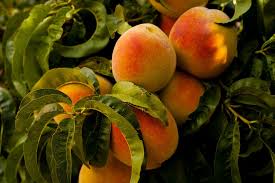
August is a glorious time. It’s chocked full of ripened fruits! For many of us this means pie-baking time.
We all have our favorite pie crust recipe, right? I inherited mine from my Grandma Crist. It includes 1 egg and 1 tablespoon vinegar plus ice water. I’ve seen this recipe all over the place—it’s a popular go-to pie crust recipe.
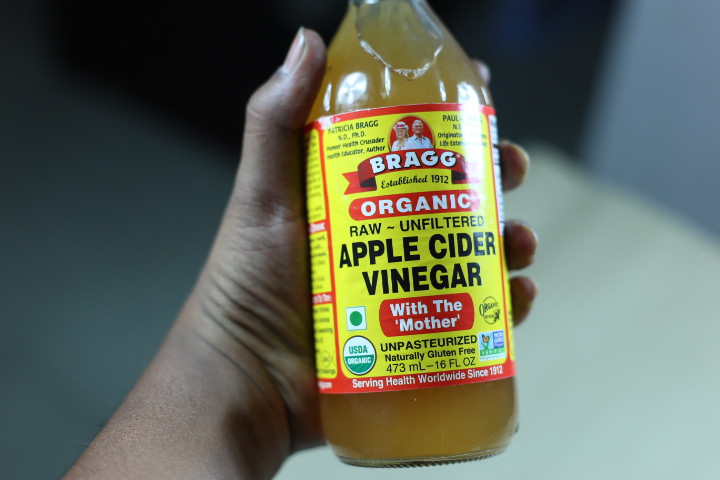
But have you ever wondered why there’s vinegar in the recipe? (And by the way, it doesn’t matter what kind of vinegar…clear, apple cider, etc.) There are good reasons for adding it in, and I turn to Chef Susan Reid, who is the Food Editor of Sift magazine. She does demos, appearances, and answers food (and baking) questions all over the country. The King Arthur Flour Company asked her this same vinegar-in-pie-crust question and posted her information on their site (www.blog.kingarthurflour.com). Here’s Susan’s explanation for adding vinegar:
“The most common answer — that it affects gluten development — isn’t actually that useful. We can look through a mass spectrometer and measure the difference vinegar makes in the tensile strength of gluten strands in dough, which in theory makes it a bit more tender, but actually, the difference is teensy.
“No, there are a couple more important perks to using vinegar. First, it provides a little insurance against overworking the dough. And, second, that splash of vinegar will keep your dough from oxidizing and turning gray.
“What happens if your dough is gray and oxidized, and you bake it anyway? Good news. It’ll be fine. While the oxidized dough was a little floppier to work with and didn’t hold the pattern of the pie-top cutters, the look and flavor of the baked dough were pretty much the same.
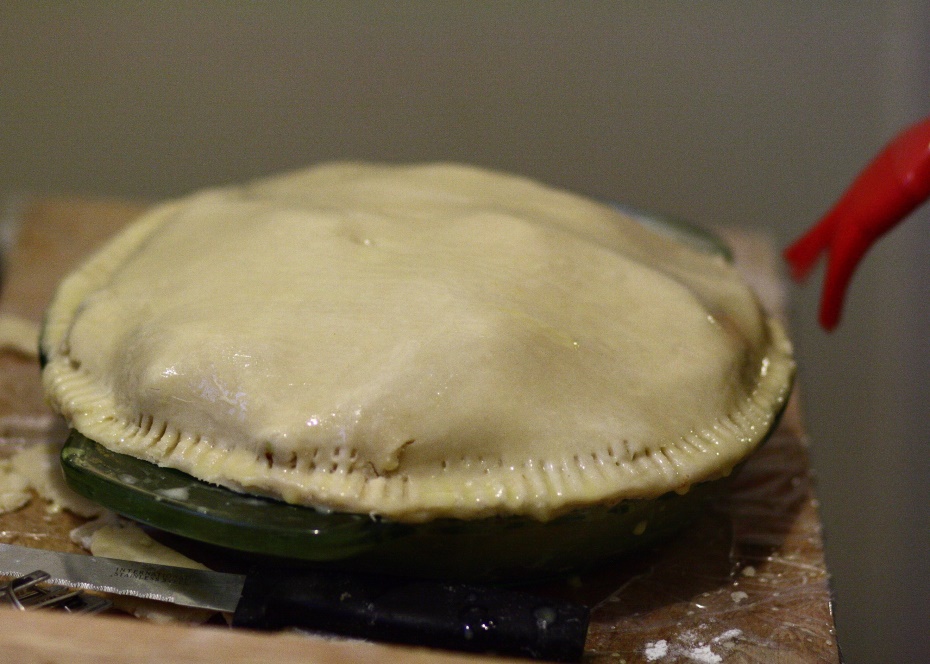
“In the end, if you prepped your dough without vinegar, forgot about it, and worry you’ll have to start over, fear not. Use your gray dough and give it a little egg wash on top before baking, and you’ll still have a great pie.”
WELL, a “great pie” if you followed the best practices for making your pie dough. And we seasoned bakers know that the biggest determining factor in the quality of your pie crust is the technique used to make it. But for those readers who are still honing their pie-baking skills, here’s more of Susan’s advice on how to turn out not just a good, but a wonderful pie.
“Here’s the thing: Vinegar, buttermilk, lemon juice, and vodka all change the interaction of the liquid and gluten in the dough. But the difference between a dough with acid in it and one without (when made with the same technique) is infinitesimal. In other words, NO INGREDIENT can cure poor execution.”
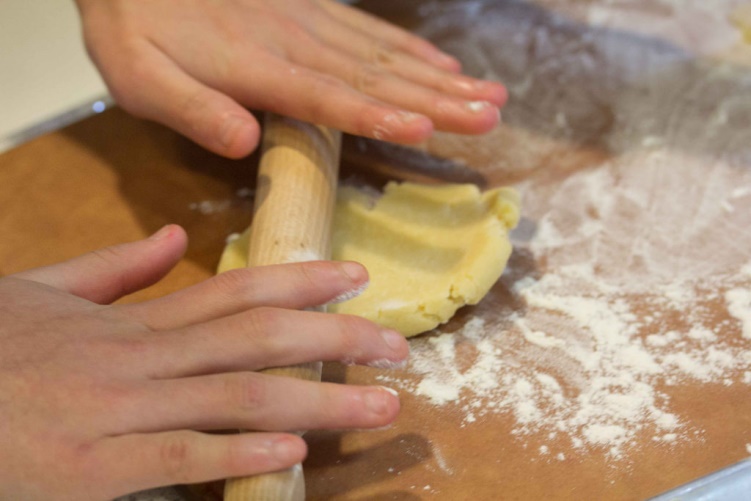
Wait a minute! VODKA in pie crust? Never heard of that. Here’s what Susan says: “The theory is that the alcohol in vodka displaces some of the water, making less water available to form gluten strands in the pie dough. But the alcohol % in the vodka is such a small amount that the effect is barely perceptible. So as I said above, you would get a LOT more bang for your buck by improving your technique and getting to know just how much to move the dough around without it being too much.
“So remember the essential rules of pie baking. Be meticulous in following these best practices and your pies will win every time:”
Keep your fat cold, and leave half of it in larger chunks, bigger than you think they should be.
Add liquid, but not too much.
Fold the dough to bring it together, and don’t be anxious if it’s a little crumbly, as long as it feels damp.
This is where overworking is a risk; as long as the dough is mostly holding together, you don’t need to spend a lot of time kneading it.
Chill in disks with round, smooth edges. If you do, you’ll get smooth edges when you roll it out.
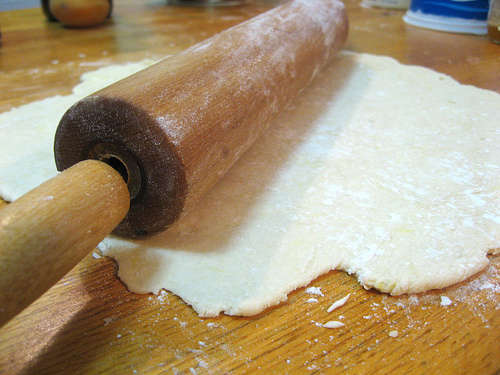
When it comes to pie dough, practice makes perfect. The most essential pastry ingredient is confidence. But if you’re a busy baker and aren’t sure when you’ll be making the leap from dough to oven, then protect it from turning gray by adding a little splash of vinegar (or lemon juice) in your recipe. Vinegar is always a good idea!
And for those that don’t have the recipe I mentioned above (the one I inherited from Grandma Crist), here you go…this no-fail recipe is perfect for pie-crust practice.
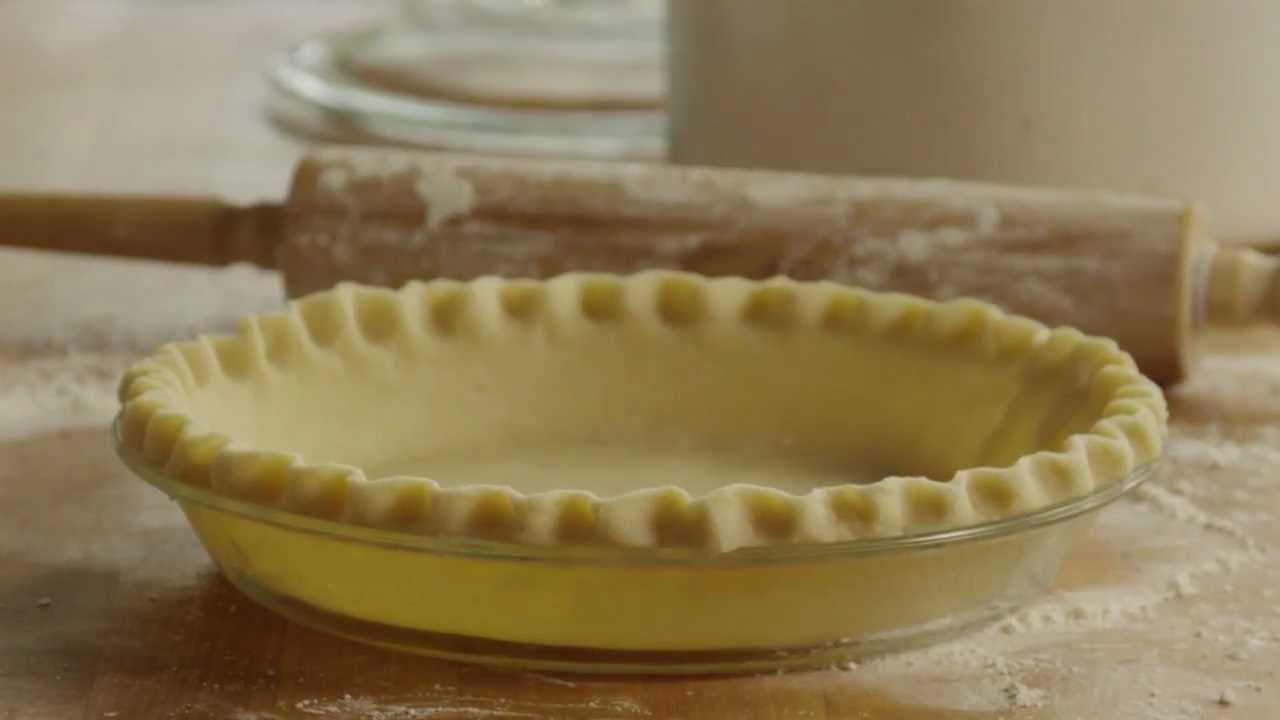
100 YEAR OLD PIE CRUST
1 egg
3 cups flour
1 teaspoon salt
1 1⁄2 cups cold shortening or 1 1⁄2 cups lard (lard is the best, if you can find it)
1 tablespoon vinegar
5 tablespoons ice cold water
In a bowl, mix together the salt and flour.
With a pastry blender, cut in cold shortening until the size of peas.
In a small cup, beat egg with a fork, add in the vinegar and water; whisk until well blended.
Add the water/egg mixture gradually to the flour mixture.
Shape into ball.
Refrigerate 1 or more hours.
Roll out dough, use for 2 (8" pie crust) OR 1 large deep dish pie crusts.
- www.maxpixel.com
- www.flickr.com
- www.wikimediacommons.com
- www.notyourmotherscookbook.com
- www.youtube.com
- www.jcfamilies.com
 Alice Osborne
Alice Osborne
Weekly Newsletter Contributor since 2006
Email the author! alice@dvo.com
